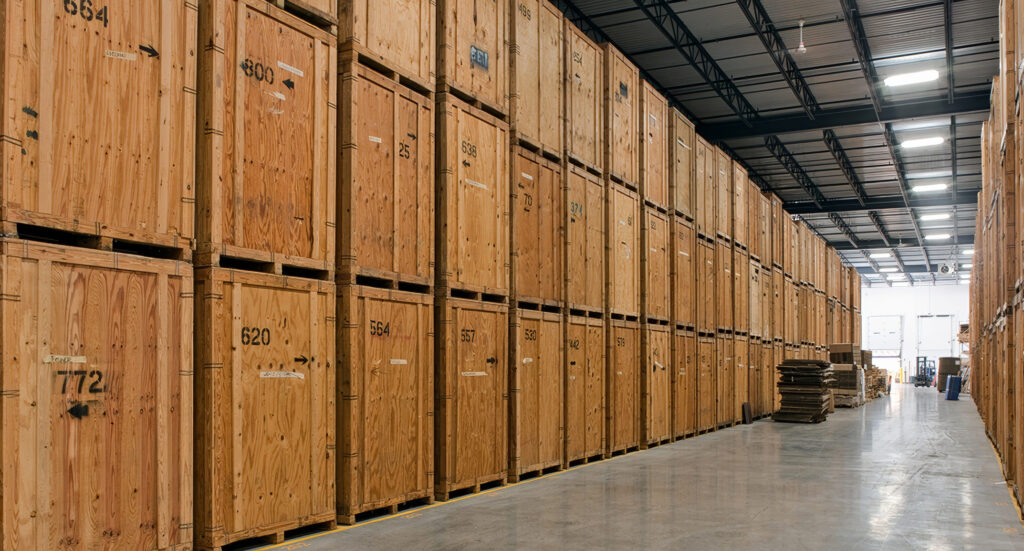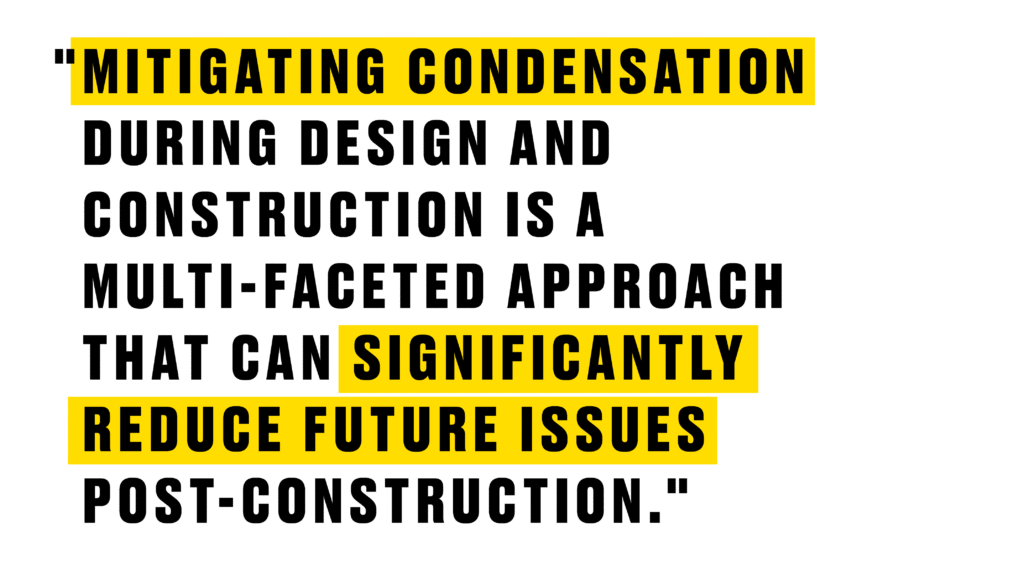Condensation within warehouses arises from the conversion of water vapor in the air to liquid form, predominantly influenced by air temperature and relative humidity levels.
Seasonal weather transitions often exacerbate these conditions, leading to increased occurrences of condensation.

OPERATIONAL STRATEGIES
Temperature Management: It is essential to maintain the warehouse’s internal temperature at the lowest operationally acceptable level, ensuring it does not exceed 60°F. Doing so significantly reduces the risk of reaching the dew point, which is crucial for preventing condensation.
Humidity Control: To prevent humid air ingress, it is advisable to keep internal doors closed when the external humidity surpasses the internal levels. Conversely, opening doors when the external humidity is lower than the internal levels can aid in reducing the warehouse’s internal humidity. Effectively monitoring humidity levels within the facility can be achieved by utilizing hygrometers placed strategically throughout the warehouse.

MECHANICAL SOLUTIONS
WAREHOUSE SOLUTIONS
Exhaust Fans Installation: The implementation of exhaust fans, each with a capacity of .06 cubic feet per minute (cfm) per square foot and equipped with humidity controls, is recommended. These controls should activate the fans when the internal humidity exceeds the external levels, facilitating air movement within the warehouse and aiding in humidity reduction.
High-Volume, Low-Speed (HVLS) Fans: The use of HVLS fans is advised to enhance air circulation within the warehouse, thereby reducing surface condensation by lowering dew points on exposed surfaces.

MECHANICAL SOLUTION OPTIONS
Humidity-Controlled Doors: The installation of automated doors, which are controlled by humidity sensors, is recommended. The cost for this implementation ranges between $40,000 and $80,000, depending on the number of doors required.
Interlocked Fans and Louvers: A system comprising fans interlocked to louvers, controlled by humidity sensors, is suggested. This system’s cost is estimated to be between $100,000 and $150,000, varying with the number of installations.
Summer Vent Fans/Louvers: Installing summer vent fans or louvers with humidity controls is recommended, with costs ranging from $350,000 to $500,000. This cost depends on the number of air changes needed for the facility.
Dehumidification Units: The installation of roof-mounted dehumidification units is proposed as a comprehensive solution to address humidity issues, with costs ranging from $500,000 to $700,000.

OFFICE SOLUTIONS
Enthalpy Economizer: An integration of an enthalpy economizer with office Rooftop Units (RTUs) is suggested to regulate the intake of outside air based on external humidity levels, ensuring that air is only brought in when the humidity is not too high.
Hot Gas Reheat: Implementing a hot gas reheat system on the return side of the HVAC system is advised. This system will extract moisture from the return air, thereby reducing the humidity level of the supply air, which contributes to a more comfortable and less humid office environment.
Conclusion
Mitigating warehouse condensation requires a multifaceted approach, combining diligent operational practices with strategic mechanical interventions. By adhering to the recommendations provided by Peak Construction, warehouse operators can significantly reduce the risk of condensation, safeguarding their assets and maintaining structural integrity.









